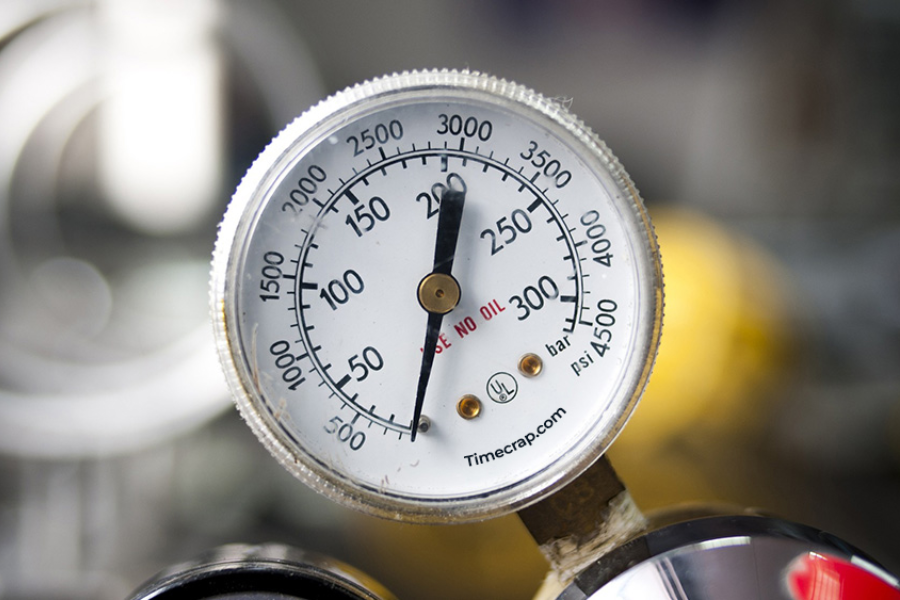Whether you’re an experienced mechanic, a dedicated DIY enthusiast, or an automotive professional, understanding the tools you use is essential. Among these tools, Vacumetros—commonly known as vacuum gauges—are indispensable for monitoring and regulating vacuum pressure. In this comprehensive guide, we’ll delve into the workings of Vacumetros, explore their diverse applications, and provide practical tips on using these tools effectively. We’ll also look at the evolving landscape of vacuum gauge technology and its implications for users.
Introduction to Vacumetros: Understanding the Tool and Its Significance
A vacuum gauge, often referred to as a ‘Vacumetro,’ is a versatile instrument used to measure pressure levels below atmospheric pressure. This tool features a dial face with a needle that moves within a specified range, indicating the vacuum or negative pressure in a system. Typically calibrated in units like inches of mercury (inHg) or millimeters of mercury (mmHg), the gauge plays a crucial role in maintaining the efficiency and performance of various systems.
Vacuum, essentially the absence of atmospheric pressure, is a critical parameter in numerous mechanical applications. Accurate measurement of vacuum levels enables professionals to diagnose issues in engines, HVAC systems, and even household appliances. Without vacuometers, such diagnostics would rely on less precise methods, potentially leading to inefficiencies and incorrect fixes.
The Science Behind Vacumetros: How They Work
At the core of a vacuum gauge is a mechanism known as a ‘bourdon tube,’ commonly found in mechanical gauges. When the vacuum level changes, the pressure difference between the inside of the bourdon tube and the vacuum source causes the tube to contract or expand. This deformation is then translated into the rotational movement of the gauge’s needle, providing a readable measurement.
For digital and electronic vacuometers, the principles are similar, with pressure changes being converted into electrical signals. These signals are then processed and displayed by the device. The accuracy of vacuum measurements depends on the sensitivity of these pressure-sensing components and their ability to translate minute pressure changes into a readable format.
Applications Across Different Industries: Automotive, HVAC, and Home DIY Projects
Vacuum gauges are employed in various settings, including:
Automotive Industry
In the automotive sector, vacuum gauges are vital for diagnosing engine issues, particularly those related to the fuel system and exhaust. They assist in adjusting carburetors, setting ignition timing, diagnosing vacuum-operated accessories, and are essential for performance tuning in both gasoline and diesel engines.
HVAC Systems
In heating, ventilation, and air conditioning (HVAC) systems, vacuometers are crucial for system evacuation, where moisture and contaminants are removed under deep vacuum to prevent long-term system damage. HVAC professionals also use these tools to test and balance air distribution systems.
Home DIY Projects
For home DIY enthusiasts, vacuometers are useful for maintaining and repairing appliances, cleaning drains, and testing for leaks in simple vacuum systems like vacuum cleaners.
Choosing the Right Vacumetro: Key Considerations
When selecting a vacuum gauge, it’s important to consider your specific needs. Here are some factors to keep in mind:
Type of Instrument
Analog gauges are generally less expensive and simple to use, requiring no power. Digital gauges offer increased precision and may come with additional features like data storage or wireless connectivity.
Pressure Range
Ensure the gauge’s pressure range covers the measurements needed for your applications. Different gauges are suited for high vacuum, low vacuum, and specific pressure ranges.
Durability and Use Environment
Consider the environment in which the gauge will be used. For example, harsh industrial settings may require a rugged gauge with protective features.
Additional Features
Some gauges come with features like alarms, peak-hold functions, or compatibility with various fluids and gases, which can be beneficial depending on your application.
Step-by-Step Guide to Using a Vacumetro Effectively
To use a vacuum gauge effectively, follow these steps:
- Prepare the System
Ensure the system is properly sealed and free from leaks before measurement. - Connect the Gauge
Attach the vacuum gauge to the system’s pressure port using the appropriate tubing or fittings. Check that all connections are secure. - Take the Reading
Start the system and observe the vacuum gauge reading. Note the stable reading and compare it to the system’s specifications. - Interpret the Results
Use the vacuum level to diagnose issues or confirm proper system operation. Investigate further if the reading is unexpected.
Common Mistakes to Avoid When Using Vacumetros
To ensure accurate measurements and safe operation, avoid these common mistakes:
- Over-Pressurizing the Gauge
Exceeding the gauge’s maximum rated pressure can damage it. Always start with low pressure and increase gradually while monitoring the gauge. - Using the Wrong Gauge
Choose a vacuum gauge designed for the specific type of pressure you’re measuring, whether absolute, differential, or relative. - Incorrect Attachment
Improper connections can lead to leaks and inaccurate readings. Always use the correct fittings and verify secure connections.
The Future of Vacumetros: Innovations and Emerging Trends
Advancements in sensor technology and digital interfaces are shaping the future of vacuum gauges. Innovations include AI and machine learning for predictive maintenance, compact wireless gauges for remote monitoring, and enhanced sensitivity for even more precise measurements. Additionally, the push towards environmentally friendly practices is driving the development of vacuum gauges compatible with green technologies and refrigerants.
Conclusion: Key Takeaways and Next Steps
Vacumetros are invaluable tools across various industries, offering precise insights into system performance and aiding in diagnostics and maintenance. By understanding the science behind vacuum gauges and following best practices, professionals and DIYers alike can ensure the efficient and safe operation of their systems.
Whether you’re an automotive enthusiast focused on engine optimization, an HVAC technician working on complex air handling units, or a homeowner tackling routine appliance upkeep, the right vacuum gauge can make all the difference. Stay informed about the tool, its applications, and the evolving technology to excel in your field.
Dive into unique insights and captivating content at BunkKnot

